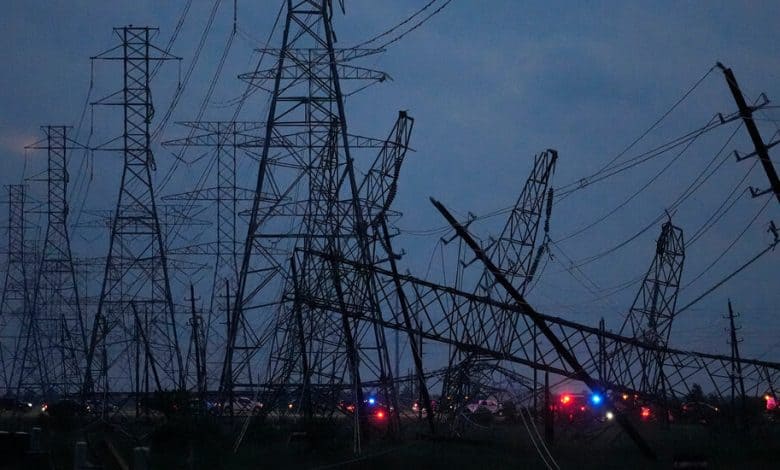How a Heat Wave Could Become a Catastrophe

On a recent Thursday evening, a freakish windstorm called a derecho (Spanish for “straight ahead”) hit Houston, a city of more than two million people that also happens to be the epicenter of the fossil fuel industry in America.
In a matter of minutes, winds of up to 100 miles per hour blew out windows on office buildings, uprooted trees and toppled electric poles and transmission towers. Nearly a million households lost power. Which meant that not only was there no light, but there was no air-conditioning. The damage from the storm was so extensive that, five days later, more than 100,000 homes and businesses were still marooned in the heat and darkness.
Luckily, the day the derecho blew in, the temperature in Houston, a city infamous for its swampy summers, was in the low to mid-80s. Hot, to be sure, but for most healthy people, not life-threatening. Of the at least eight deaths reported as a result of the storm, none were from heat exposure.
But if this storm had arrived several days later, perhaps over the Memorial Day weekend, when the temperature in Houston hit 96 degrees, with a heat index as high as 115, it might have been a very different story. “The Hurricane Katrina of extreme heat,” is how Mikhail Chester, director of the Metis Center for Infrastructure and Sustainable Engineering at Arizona State University, once put it to me, echoing the memory of the catastrophic 2005 hurricane that struck Louisiana, devastated New Orleans and killed more than 1,300 people.
Most people who died in Louisiana during Katrina died from drownings, injuries or heart conditions. But Dr. Chester was using Katrina as a metaphor for what can happen to a city unprepared for an extreme climate catastrophe. In New Orleans, the levee system was overwhelmed by torrential rains; eventually, 80 percent of the city was underwater.
What if, instead, the electricity goes out for several days during a blistering summer heat wave in a city that depends on air-conditioning in those months?